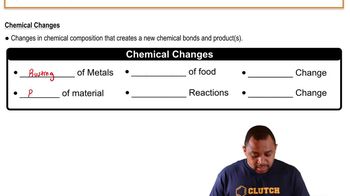Textbook Question
Consider the reaction:
2 HBr (g) → H2 (g) + Br2 (g)
b. In the first 25.0 s of this reaction, the concentration of HBr dropped from 0.600 M to 0.512 M. Calculate the average rate of the reaction during this time interval.
 Verified step by step guidance
Verified step by step guidance



Consider the reaction:
2 HBr (g) → H2 (g) + Br2 (g)
b. In the first 25.0 s of this reaction, the concentration of HBr dropped from 0.600 M to 0.512 M. Calculate the average rate of the reaction during this time interval.
Consider the reaction:
2 HBr (g) → H2 (g) + Br2 (g)
c. If the volume of the reaction vessel in part b was 1.50 L, what amount of Br2 (in moles) was formed during the first 15.0 s of the reaction?
For the reaction 2 A(g) + B(g) → 3 C(g), a. Determine the expression for the rate of the reaction in terms of the change in concentration of each of the reactants and products.
For the reaction 2 A(g) + B(g) → 3 C(g), b. when A is decreasing at a rate of 0.100 M/s, how fast is B decreasing? How fast is C increasing?